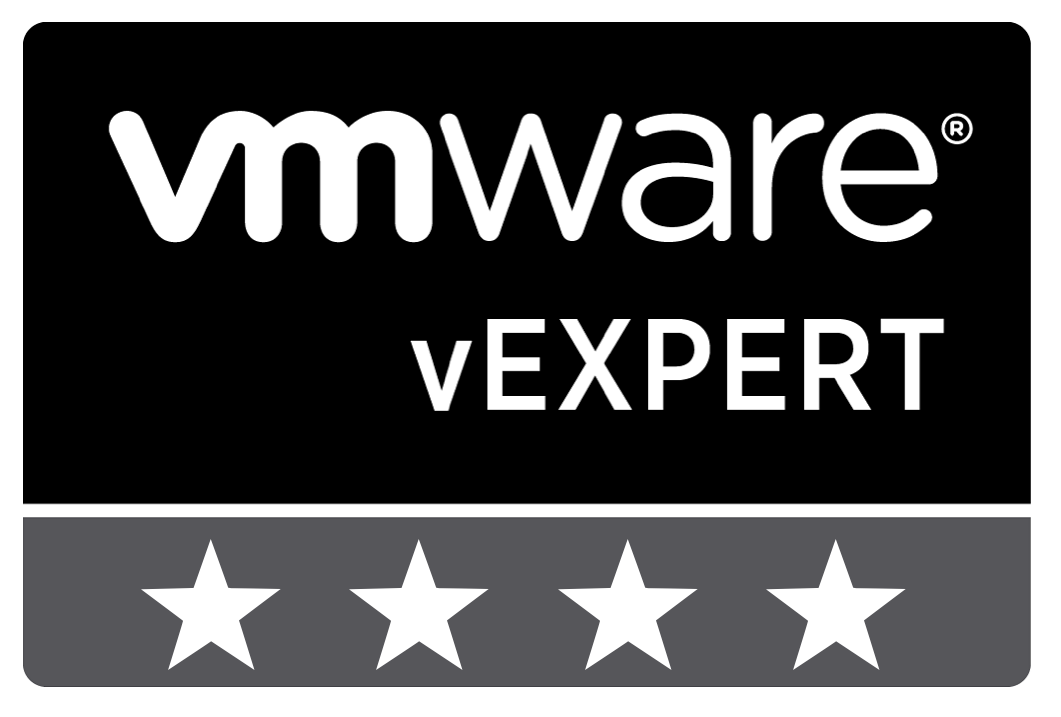
The VMworld Hackathon I failed to attend… And how our team won – Part 1
As usual, during VMworld Europe in Barcelona, VMware organized another Hackathon for enthusiasts to work in a small teams and develop something impressive in a couple of hours. And as usual, I desperately wanted to participate, so I enrolled and decided to become part of a team called “ContainerQuest!”.
I wanted it desperately, because as my job becomes more and more demanding, i find myself having less and less time to work on side projects and code just for fun of learning something new. And i really wanted to pick that back up at this Hackathon.
Unusually, while i was enrolled in the team, I actually wasn’t able to attend (because of that demanding job roping me in).
More unusual, I still won… Or, to be more accurate, the team i was part of won, and were kind enough to still put my name in as a contributor, causing me to receive my price and some glory!

This is a story in 3 parts:
- Part 1 – The team and the goal
- Part 2 – The story, the plan and the problem
- Part 3 – The implementation, the result and the future
The team
While subscribing to the hackathon, the first thing I had to do, was figure out what i wanted to work with. I already made up my mind that if i could, i wanted to work on something with containers and Kubernetes. I’ve been digging into that more and more over the last year, and i love it.
Luckily, VMware has spend some time in this area as well, with several products, allowing me to have a choice of technology I could work with. One that has always stood out since i first heard about it, was VMware Kubernetes Engine (VKE, now renamed to VMware Cloud PKS).
While looking through other people that had subscribed, and through the teams and goals they created. I came across the “ContainerQuest!” team. With a wonderful description:
Sir Devalot’s Container Team: Quest for the Holy Container! In this scenario we will simulate a live environment where small containers live and die in an exercise of self-awareness, reacting to their surroundings. We will tinker with VKE, Kubernetes, Containers, YAML, Javascript, HTML5 and perhaps Clarity or Grafana, even Godot! Don’t hesitate to join in! ;-) #hackathon-eu-team7
Monty Python, Quests, Containers and trying to build self-awareness (who doesn’t want our robotic overlords to finally take control?), perfect!
Eventually we ended up with a team of 9 people:
- Ignacio Osete
- Lars Trøen
- Iván Ruiz
- Ferran Espigares
- Frode Garnes
- Lino Telera
- Kristian Risdal
- Constantin Ivanov

The Goal
The team’s description might not make it out very clear, but our goal was to build a solution that would run Conway’s Game of Life, with pods in Kubernetes.
Conway’s Game of Life is a system where you start with a grid of live and death cells, and based on a set of rules, cells continue to live, die or get born. This way the grid evolves and interesting patterns can be shown. More information can be found on the Conway’s Game of Life Wikipedia page.
After meeting up on the VMware {code} Slack, the team quickly came to a set of goals that we would attempt to reach during the hackathon:
- Implement Conway’s Game of Life as Kubernetes Pods
- Use VMware VKE
- Use Clarity to visualize the pod status
- Monitor the platform using Wavefront
- Have fun learning, working and meeting great people
This looked like a lot of fun and we were all very excited to work on this. Most of the team members did not have much experience with Kubernetes and were eager to learn about it.
As I did have some experience with Kubernetes, my role quickly became one of explaining some of the core concepts and especially work on the backend of the code, the part that would actually interface with Kubernetes.
This was in itself rather challenging, as while i’d been interacting with Kubernetes a lot using the classic resource files, i’d never actually automated or programmed anything talking to the Kubernetes API.







